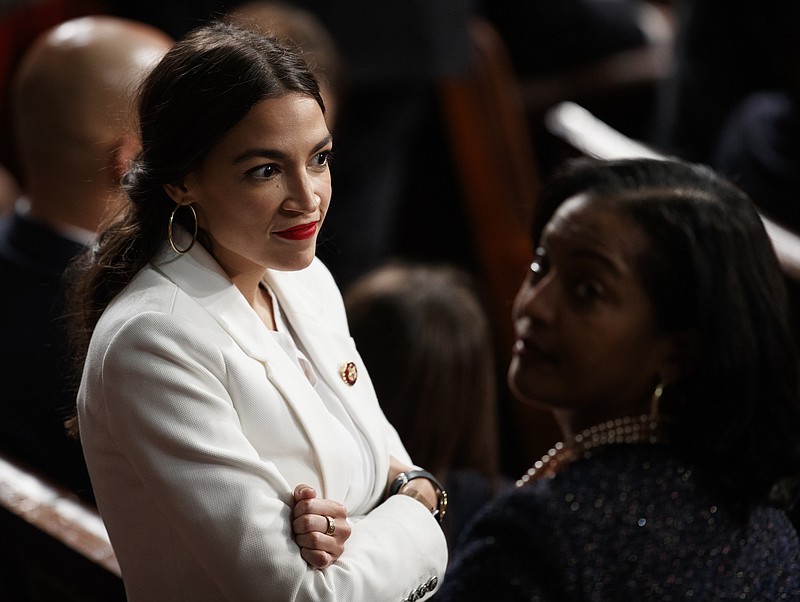Back in 2007, I wrote a column calling for a "Green New Deal," and I later expanded on the idea in a book, "Hot, Flat and Crowded." Barack Obama picked up the theme and made a Green New Deal part of his 2008 platform, but the idea just never took off. So I'm excited that the new Democratic Congresswoman Alexandria Ocasio-Cortez and others have put forward their own takes on a Green New Deal, and it's now getting some real attention.
The Green New Deal that Ocasio-Cortez has laid out aspires to power the U.S. economy with 100 percent renewable energy within 12 years and calls for "a job guarantee program to assure a living wage job to every person who wants one," "basic income programs" and "universal health care," financed, at least in part, by higher taxes on the wealthy. Critics argue that this is technically unfeasible and that combining it with democratic socialist proposals will drive off conservatives needed to pass it.
My own definition of a Green New Deal, which has evolved since 2007 as the technology has gotten better and the climate problem has gotten worse, remains focused on how a green revolution in America can drive innovation, spur new industries and enhance our security.
For too long "green" was viewed as a synonym for a project that was boutique, uneconomical, liberal, sissy and vaguely French. I wanted to recast green as geostrategic, capitalistic, economical, innovative and patriotic.
To achieve scale, though, my view was that a Green New Deal had to be embraced by more than liberals. You had to reach conservatives and even climate deniers. My way of doing that was to focus on something we can all agree on: math. There are about 7.6 billion people on the planet today and, according to the United Nations, there will be 8.6 billion in 2030. A billionmore people driving, flying, eating protein, building homes and drinking water in just more than a decade.
If they all adopt the per capita consumption habits of today's Americans, we will burn up, heat up, eat up, plow up, choke up and smoke up the planet, whether the climate changes or not. That means that clean power, clean cars, clean manufacturing, clean water and energy efficiency have to be the next great global industries - otherwise, we humans are going to be a bad biological experiment, whether the climate changes or not.
Who believes that America can remain a great country and not lead the next great global industry? Not me. A Green New Deal, in other words, is a strategy for U.S. national security, national resilience, natural security and economic leadership in the 21st century. Surely some conservatives can support that.
But which Green New Deal? Mine is focused on innovation. I believe there is only one thing as big as Mother Nature, and that is Father Greed - aka, the market. I am a green capitalist. I think we will only get the scale we need by shaping the market.
To keep it simple, my goals would be what energy innovator Hal Harvey has dubbed "the four zeros." 1. Zero-net energy buildings: buildings that can produce as much energy as they consume. 2. Zero-waste manufacturing: stimulating manufacturers to design and build products that use fewer raw materials and that are easily disassembled and recycled. 3. A zero-carbon grid: If we can combine renewable power generation at a utility scale with some consumers putting up their own solar panels and windmills that are integrated with the grid, and with large-scale storage batteries, we really could, one day, electrify everything carbon-free. 4. Zero-emissions transportation: a result of combining electric vehicles and electric public transportation with a zero-carbon grid.
I am eager to see what other people propose, but we don't have another decade to waste. This may well be our last chance to build the technologies we need at the scale of the challenge we face in the time we still have to - as scientists say - manage the unavoidable aspects of climate change and avoid the unmanageable ones.
The New York Times
